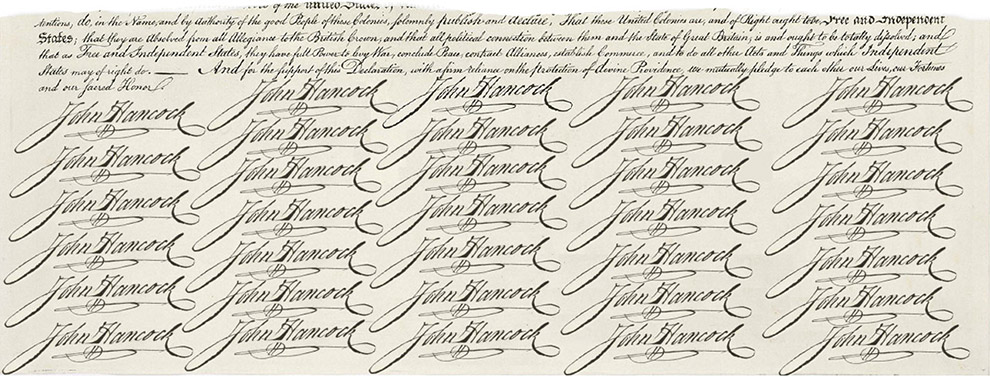Did he read it in the newspaper like everybody else in England? Did the Continental Congress send a messenger specifically to take it to him?
BONUS QUESTION: Were there England-bound ships heading out of New York Harbor every day?
Did he read it in the newspaper like everybody else in England? Did the Continental Congress send a messenger specifically to take it to him?
BONUS QUESTION: Were there England-bound ships heading out of New York Harbor every day?
Its actually addressed to “a candid world”; they weren’t telling Englad they were free, they were telling everyone else.
They sent it to him directly, as the National Archives note, but I don’t see any more detail than that (i.e., whether it was via envoy or parcel post).
that’s not what wikipedia says (I would rate the national archives over that but I don’t see that statement the page you posted):
One of the first readings of the Declaration by the British is believed to have taken place at the Rose and Crown Tavern on Staten Island, New York in the presence of General Howe.[97] British officials in North America sent copies of the Declaration to Great Britain
The National Archive page says at the bottom
The signers sent a copy of the Declaration to King George III with only two names on it: John Hancock and Charles Thomson, the President and the Secretary of the Continental Congress.
The two versions aren’t necessarily in dispute; both could have happened.
Googling gives me this:
Here’s an earlier thread that covered it.
I’m positive that we touched on this in a fairly recent thread about John Hancock’s signature, but I can’t find it. The answer was that Hancock did not sign the broadside - his name was printed, but in larger letters. Whether George bothered to read the broadside personally seems to be unknown.
A broadside, as everyone knows, is when you fire all the cannons on your ship at once. That pretty much gets the point across.
Not sure what a Dunlap Broadside is, sounds like it might involve dropping your trousers.
I’m guessing “broadsides” here means something like poster-size printed versions, named for their printers.
A broadside was a printed leaflet or poster which was a common way of getting an argument/proposition/theory/announcement before the public in an age before mass circulation newspapers. The printer naturally sought to make money out of it, if it was popular enough. The term appears at least as far back as the [English] civil war.
John Dunlap was the printer for the continental congress, and was the person who printed the broadsides (single page posters) with copies of the Declaration. They came to be called Dunlap Broadsides.
No, it’s Dunlap’s Disease that sometimes involves trouser dropping.
I want to know if he needed his specs to read Hancock’s signature.
Originally, Hancock signed it 34 times to make sure it would be readable by “that fat old poop”.

When he was done, he decided it looked “coo-coo”, and had to wad it up and rewrite it.
Nitpick: George III was 38 years old in 1776.
At the time, Hancock said he made sure to sign it big so "the fat old King can read it without his spectacles”. Or so goes the folklore - I wasn’t there. Now 36 isn’t really old, true, but I’m guessing he meant it affectionately.
Heh! Lookit that show-off Hancock! Pretty fancy signature, for an insurance man!
Nitpick
You don’t fire them at once, not if don’t want to damage the hull. You do whats known as a rolling, broadside, basically firing them off quickly in turn.
Here is HMS Victory performing a rolling broadside.